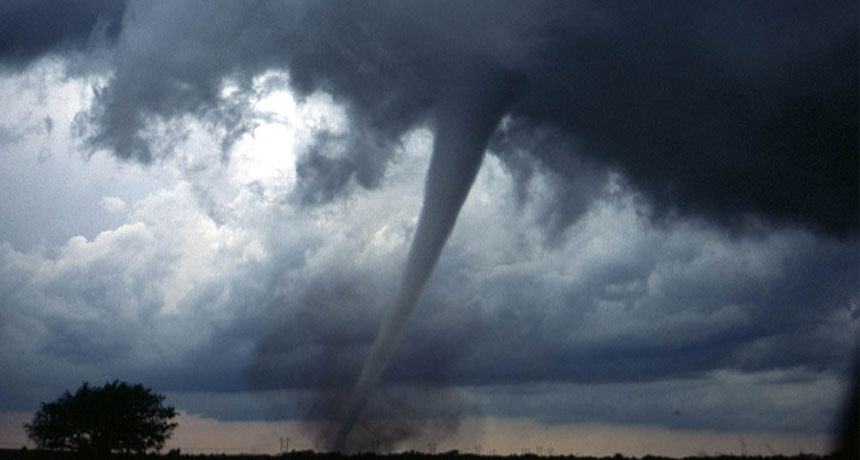Explainer: Why a tornado forms
Tornadoes start with a thunderstorm. But they also require other ingredients, such as instability.

Tornadoes form in thunderstorms, but other factors drive their winds, as well.
DAPHNE ZARAS/WIKIMEDIA COMMONS
A tornado is a violently rotating column of air that forms from a cloud. Sometimes it extends from a thunder cloud to the ground below. Tornadoes can leave a path of damage more than 1.6 kilometers (1 mile) wide. They can travel paths that span more than 160 kilometers. And while some touch form only briefly, others may last more than an hour.
Tornadoes start in a thunderstorm. But they also require other ingredients, such as instability. Air is unstable when it is warmer closer to the ground than it is higher up. That warm air will rise, just as a hot-air balloon does.
If that air contains water vapor, the vapor may condense, creating water droplets at cooler temperatures higher up. These droplets may now fall as rain or hail. The conversion of water from a gas to a liquid releases heat. That heat creates strong upward currents of air. They’re known as updrafts.
Tornadoes also need wind shear. Wind shear occurs when winds at varying distances above the ground blow in different directions or at different speeds. As the winds blow, a horizontal, invisible tube of rotating air begins to form in the atmosphere. That tube rotates parallel to the ground (picture a giant spinning football or rolling pin).
A strong updraft can eventually lift that rotating tube of air until it’s perpendicular to the ground. Now it resembles a rolling pin spinning on end. Soon, the whole updraft starts to rotate. This creates a special type of thunderstorm known as a supercell. If its rotation tightens, it can morph into a tornado.
(Non-supercell tornadoes also can form, although differently. They can evolve when ground-level winds blowing from different directions set a vertical tube of air spinning. An updraft then stretches that tube, creating a smaller and less violent tornado. When this occurs over water, it is called a waterspout.)
Power Words
horizontal A line or plane that runs left to right, much as the horizon appears to do when gazing into the distance.
meteorology The study of weather and climate events.
perpendicular An adjective that describes two things that are situated approximately 90 degrees to each other. In the letter “T,” the top line of the letter is perpendicular to the bottom line.
supercell A rotating thunderstorm that can produce a violent tornado.
tornado A violently rotating column of air extending from the ground to a thunderstorm above.
water vapor Water in its gas phase.
waterspout A tornado that forms over water.
updraft An upward current of air. A downdraft is a downward current of air.
wind shear The effect of winds at different levels above the ground blowing in different directions or at different speeds.







